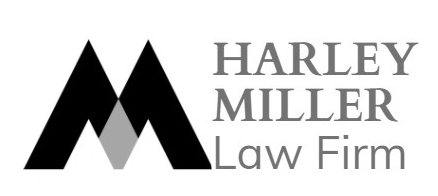Mergers and Acquisitions (M&A) are complex business transactions that require careful planning and execution. When parties engage in M&A activities, it is crucial to adhere to a set of guidelines to ensure a smooth and successful process. These guidelines serve as a roadmap, providing the parties involved with valuable insights and best practices to follow during each step of the M&A procedures. From initial negotiations to due diligence, documentation, and ultimately integration, the parties must navigate through various challenges and considerations. By following these guidelines, the parties can mitigate risks, maximize value, and increase the likelihood of achieving their strategic objectives. In this discussion, we will explore some essential guidelines for parties when carrying out M&A procedures, shedding light on key considerations and offering practical advice for a successful merger or acquisition.
Overview
In 2022, mergers and acquisitions (M&A) activities in Vietnam faced a challenging environment. The gloomy macro-economic outlook, along with volatility in the corporate bond and equity markets, and increasing interest rates, resulted in a decrease in both deal volume and value across the board. According to FiinGroup, the total deal value experienced a significant decline of 44%, amounting to USD 7.46 billion. The global and local economic uncertainties also led foreign investors to adopt a more cautious approach towards M&A transactions in Vietnam. Consequently, the total value of inbound M&A transactions decreased by 75% to USD 2.5 billion in 2022, as there were fewer mega-deals taking place. Among the active investors, Singaporean investors held the top position, followed by those from South Korea and Spain.

Key for M&A Parties
a. Key takeaways
In order to navigate the updated merger control landscape in Vietnam, it is important for M&A parties to consider the comprehensive reporting requirements, the test for qualitative substantial lessening of competition, and the significant legal consequences of non-compliance. Here are 08 key takeaways to keep in mind.
1. The thresholds for notification can vary depending on industry-specific criteria related to factors such as total revenue, total assets, transaction value, or combined market share.
2. It is important for M&A parties to be prepared for a thorough review process and anticipate potential challenges that may arise from competitors.
3. During the review process, it is crucial to consider market definition, calculate market share, and assess market concentration.
4. Safe harbors are determined based on factors such as combined market share, the post-deal Herfindahl-Hirschman Index (HHI), and the change in HHI (delta). These factors help determine whether a transaction can proceed without undergoing second-phase scrutiny.
5. In Vietnam, the competition authority uses the Substantial Lessening of Competition (SLC) test to evaluate how a transaction may impact competition. Furthermore, if a transaction is found to cause or is likely to cause significant anticompetitive effects in a Vietnamese market, it may be prohibited.
6. During the official appraisal phase, the competition authority assesses various factors including potential anticompetitive effects, possible remedies, positive economic impacts, and other relevant considerations.
7. In order to enable a transaction to proceed, pre-closing remedies such as divestiture or behavioral measures may be required. Moreover, post-closing remedies can include fines, divestiture, or behavioral remedies, depending on the nature of the violation.
8. Ongoing compliance is crucial as the post-merger entity remains accountable to other provisions of Vietnam’s Competition Law, which includes regulations on the abuse of market dominance.

b. Checklist for M&A parties:
– Evaluate the connection between their transactions and Vietnam’s market.
– Assess whether pre-notification consultation with the competition authority is necessary.
– Determine market shares by gathering reliable market data.
– Create a comprehensive and well-organized filing, including all necessary documentation and information.
– Be prepared for a lengthier and more thorough second phase scrutiny.
– Obtain business intelligence to effectively prepare for any defenses.
– Establish a plan to address any competition concerns that may arise during the review process.
– Monitor the merger process closely and maintain open communication with the competition authority.
– Seek the expertise of advisors who have a deep understanding of the law and economic theories underlying the law, are knowledgeable about practice, and can effectively persuade the competition authority.

Conclusion
In conclusion, understanding and following the guidelines for parties involved in mergers and acquisitions (M&A) procedures is crucial for a successful transaction. These guidelines, therefore, provide a framework for conducting due diligence, evaluating risks and opportunities, and navigating regulatory requirements. Additionally, by adhering to these guidelines, parties can enhance their chances of achieving synergies, mitigating risks, and creating long-term value from the M&A process. Moreover, with careful planning, effective communication, and a commitment to compliance, parties can navigate the complexities of M&A procedures with confidence and achieve their strategic objectives.
HMLF is always available to offer assistance in understanding the procedures with authorities.

Harley Miller Law Firm “HMLF”
Head office: 14th floor, HM Town building, 412 Nguyen Thi Minh Khai, Ward 05, District 3, Ho Chi Minh City.
Phone number: +84 937215585
Website: hmlf.vn Email: miller@hmlf.vn





